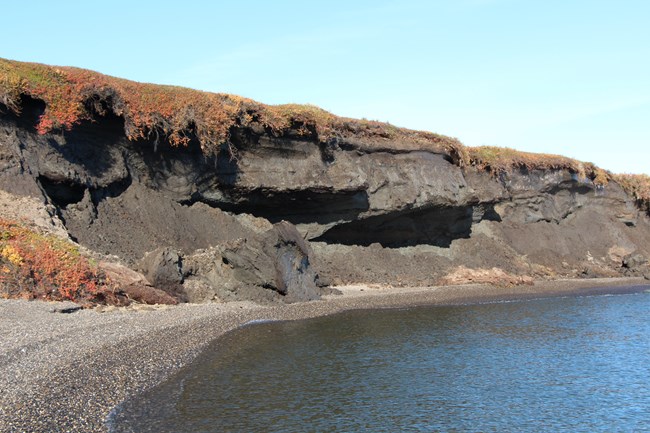
Jessica Bryant, 2016 Artist in Residence.
Coastal environments within Bering Land Bridge National Preserve and Cape Krusenstern National Monument are experiencing rapid environmental changes including coastal erosion, bluff retreat, beach accretion, sediment deposition, and permafrost thaw. The fragile coastal zone is changing rapidly as Arctic warming lengthens the ice-free season, causes sea-level rise, increases seawater temperature, and increases storm frequency and severity. A variety of nearshore marine, terrestrial, and freshwater habitats are threatened by coastal erosion, including: subtidal zones, sandy shores, barrier spits and islands, lagoons, bays and inlets, tundra bluffs, dune systems, rocky bluffs, deltas, and wetlands. Such areas provide critical habitat for unique plant communities, seal haul-outs, potential denning sites, freshwater and anadromous fish, and migratory stopover sites for birds and marine mammals. Coastal zone changes also impact human activities such as travel routes, subsistence fishing, egg-gathering, hunting of waterfowl and marine mammals. Further, these changes can alter or destroy archaeological sites.
We monitor coastal shoreline changes in Bering Land Bridge National Preserve and Cape Krusenstern National Monument to:
- Determine long-term trends in coastline accretion, erosion, and bluff retreat, and how these rates have changed through time.
- Evaluate high spatial variability in erosion rates in relation to local environmental factors.
- Detect areas that are most vulnerable, and assess impacts on ecosystems and habitats.
Learn more
Last updated: December 8, 2025
